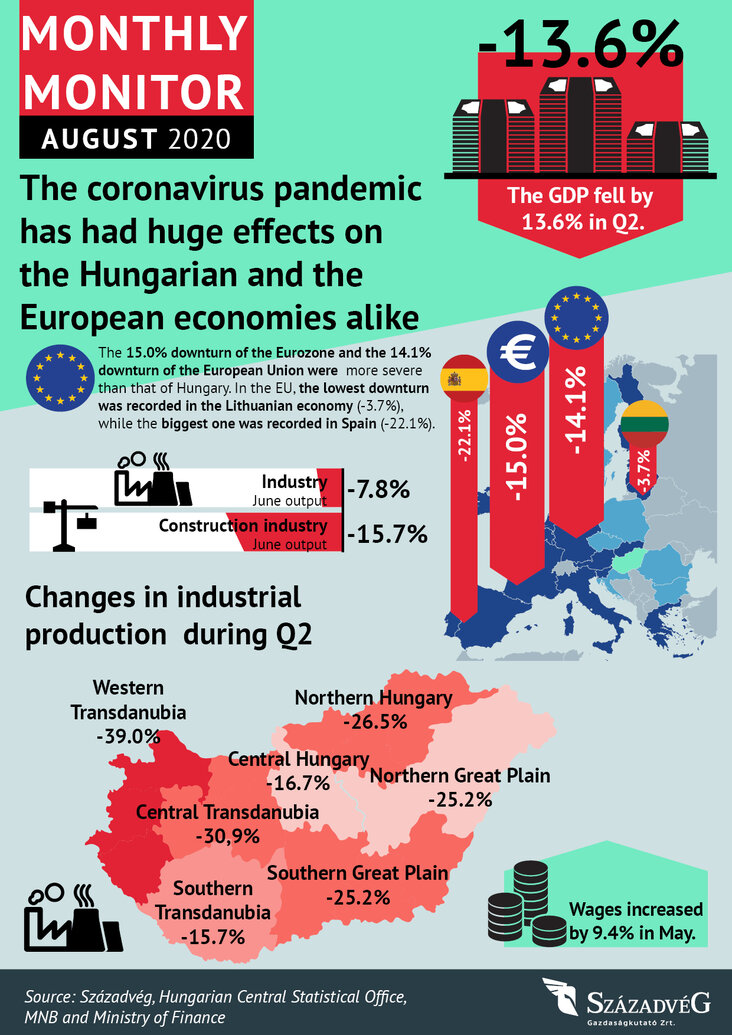To a greater or lesser extent, every sector felt the effects of the virus in Q2 and consequently saw a decrease in added values on a yearon-year basis. As restrictions got lifted, the economy slowly and gradually restarted, but does not promise to be quick. In June, industrial output was 7.8% below the level recorded one year before, which is lower than the fallback rate measured in previous months. The output of the construction industry appears to be persistently affected by the drop in demand—its output was 15.7% lower than the output measured in the same period of the previous year. By June, retail sales had, however, already reached their level of the previous year; moreover, they also expanded minimally, by 0.8%.
The downturn in the output of the Hungarian economy is worth the international comparison. The slowdowns of the different Member States of the European Union show a rather mixed picture. The Lithuanian economy shrank the least (-3.7%), while the Spanish economy shrank the most (-22.1%). The average slowdowns of the eurozone and that of the European Union (15.0% and 14.1%, respectively) were higher than that of Hungary; the fall of the Hungarian economy was, however, the most significant among the Visegrad Countries: the Czech economy shrank by 10.7%, the Slovak by 12.1% and the Polish by 7.9% on a year-on-year basis.
The inflation rate increased to 3.8% in July, while the core inflation rate grew to 4.5%, i.e. despite the downturn, there are inflationary pressures in the economy.
Please find the full report here.

